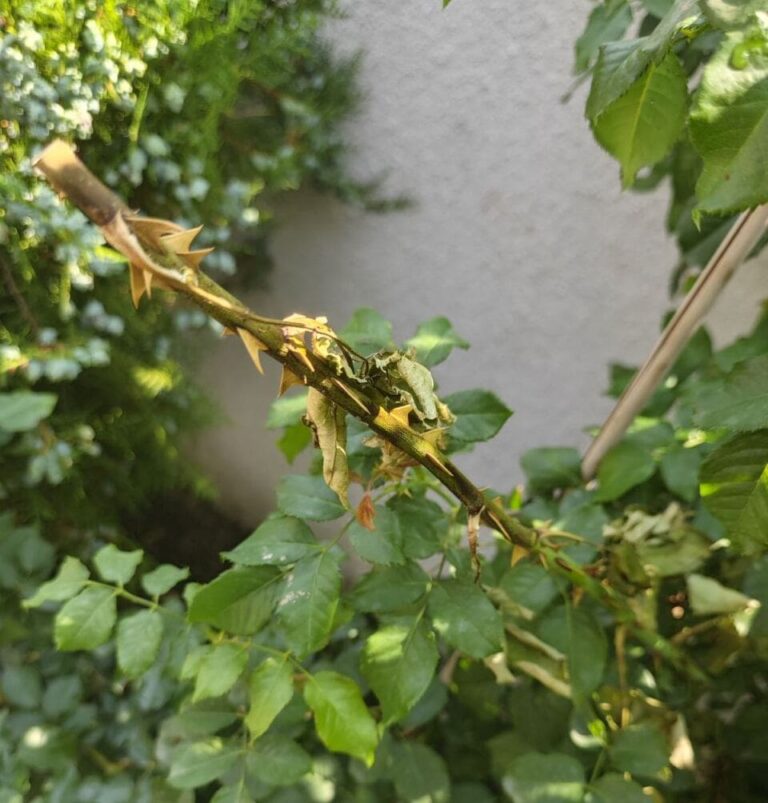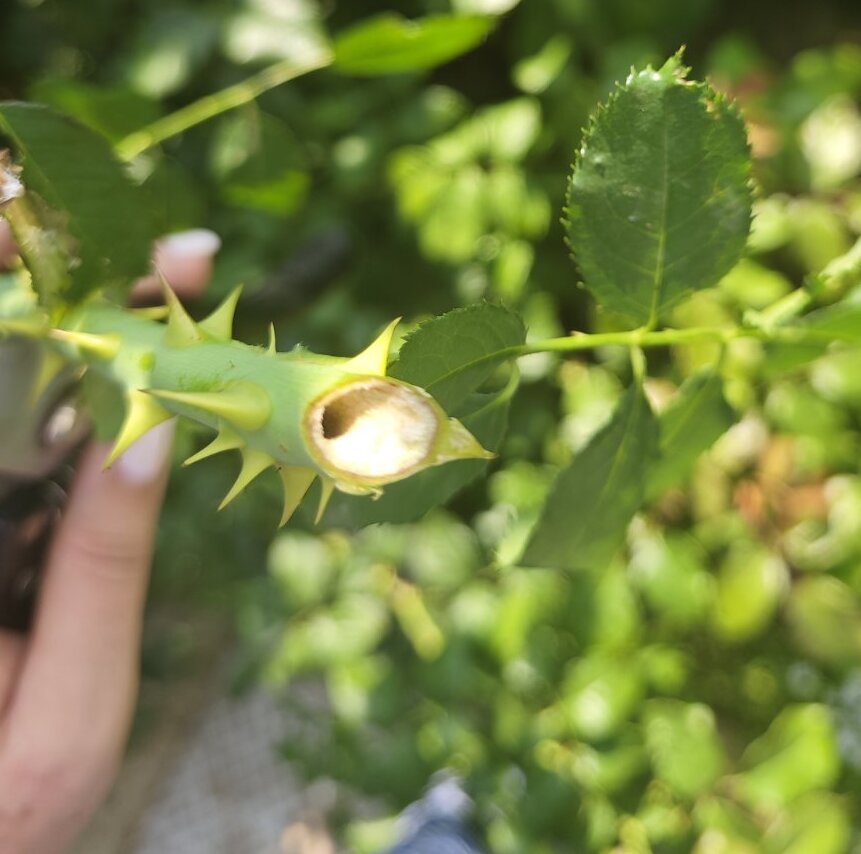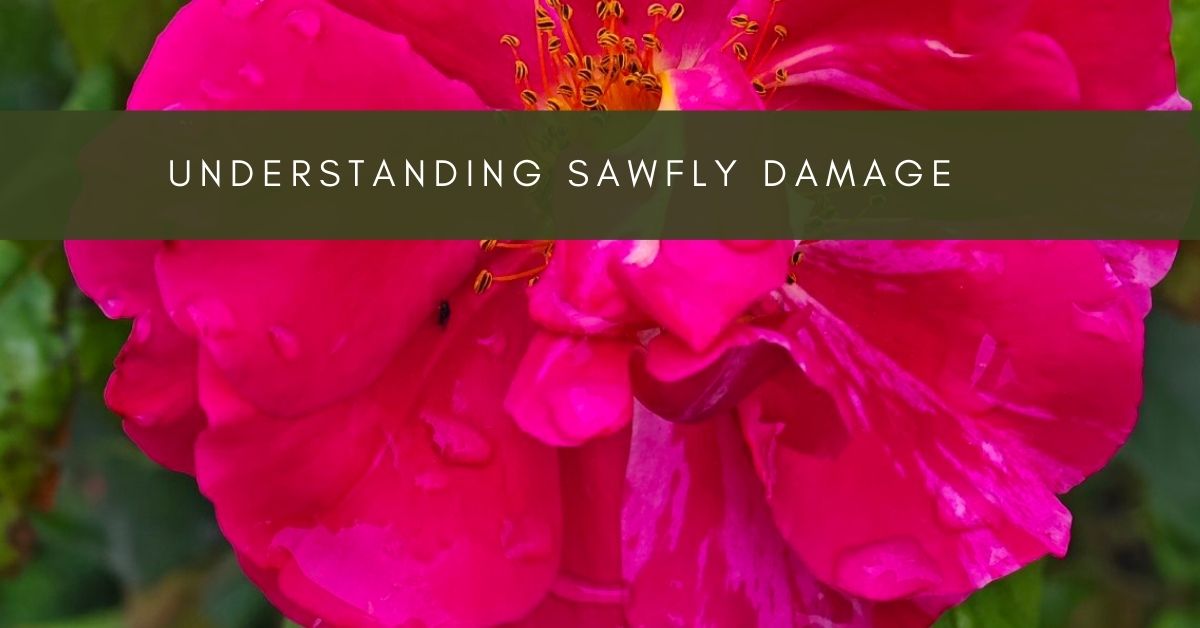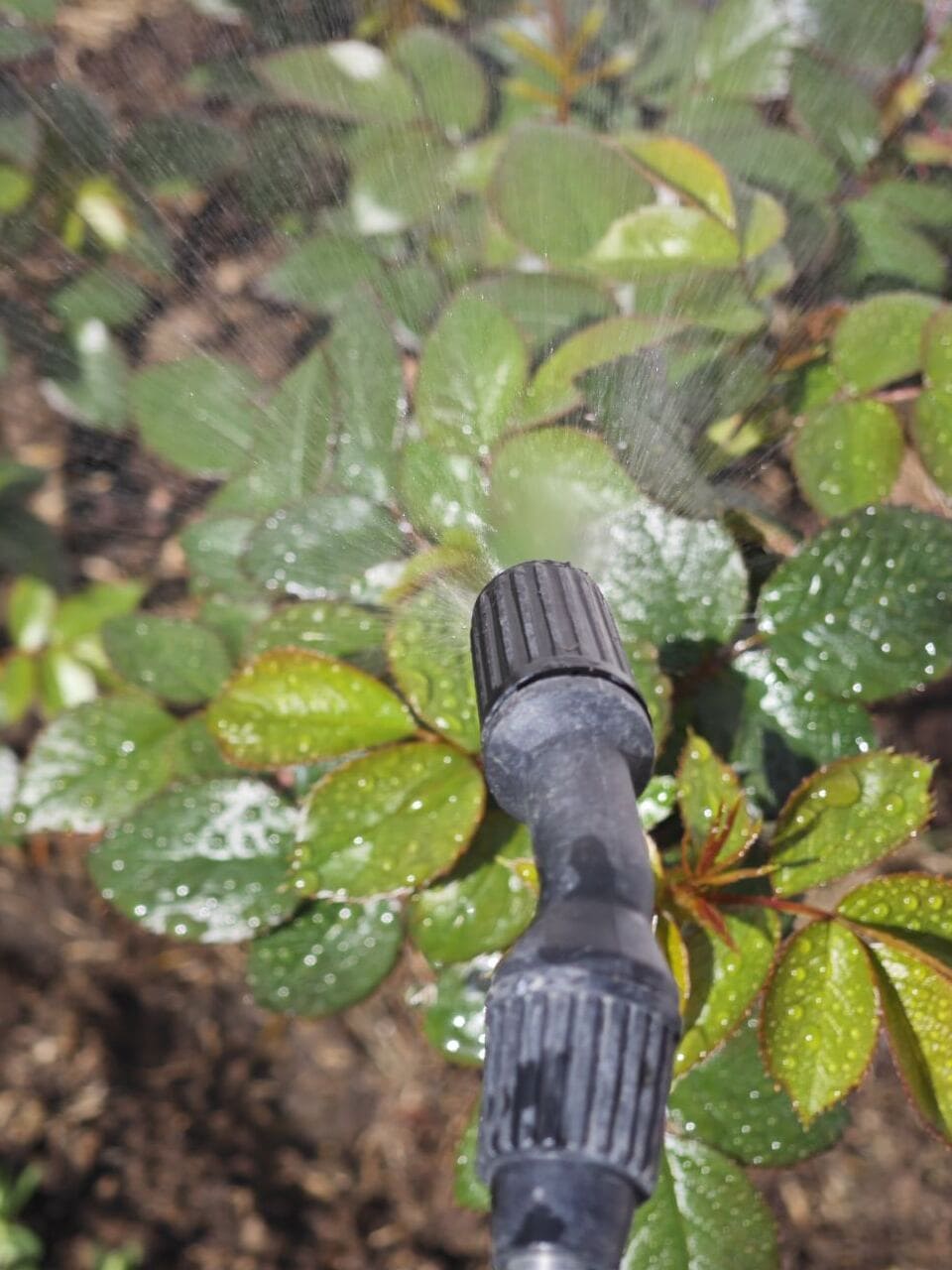As a passionate gardener, I eagerly await the arrival of spring to see my roses bloom in their full glory. However, one spring, I noticed something unusual: the young shoots of my roses were wilting unexpectedly, starting not from the base but from a specific point on the stem. Intrigued and worried, I decided to investigate the cause.
The Mysterious Wilting of Rose Shoots
One day, while examining the wilting stems, I broke one off at the point where it had started to wither. To my surprise, I found a small tunnel inside the stem. This was no ordinary damage—it was the work of a sawfly, a tiny winged insect related to bees, wasps, and ants. The female sawfly had laid eggs inside the stem, and the larvae were now feeding from within.
What Is a Sawfly?
Sawflies are an insect in the order Hymenoptera. They are closely related to bees and wasps but have distinctive biology and behavior. The ones affecting my roses were the rose stem sawflies, known for their destructive larvae.
Types of Sawflies
- Slug Sawfly: Feeds on leaves, creating window-like damage.
- Bristly Rose Slug: Known for attacking rose leaves.
- Rose Stem Sawfly: Specifically targets rose stems and boring tunnels that cause wilting.


The Lifecycle of the Rose Stem Sawflies
The lifecycle of the rose stem sawfly begins when the larvae overwinter in cocoons in the soil around rose bushes. In early spring, the larvae pupate, and adult sawflies emerge around April. The adult sawflies, small black insects with red-brown markings, are the culprits behind the hollow stems in roses.
Identifying the Damage
The following signs can identify the damage caused by rose stem sawflies:
- Young shoots start wilting from a specific point.
- Stems have a hollow tunnel when broken open.
- Larvae, which look like tiny, pale caterpillars, can be found inside the stems.
The Impact on Roses
The activity of the sawfly larvae leads to significant damage:
- Wilting and Drying: Affected shoots wilt and dry out.
- Loss of Buds: Flower buds may fall off or fail to bloom.
- Delayed Flowering: The overall flowering process is delayed due to the damage.
Methods to Combat Sawflies
Fighting sawflies can be challenging due to their hidden lifestyle. However, there are several effective strategies:
Cultural Control
- Autumn Cleanup: Removing fallen leaves and pruning damaged stems in autumn reduces overwintering sites for larvae.
- Soil Cultivation: Turning over the soil around rose bushes in autumn exposes and kills overwintering larvae.
Chemical Control
- Systemic Insecticides: Systemic insecticides can effectively kill sawflies as they emerge from pupae in early spring.
- Contact Insecticides: Spraying contact insecticides directly on sawflies can also help reduce their population.

Get Your Free Lunar Gardener's Calendar 2025!
Join the Lunar Gardening Revolution! Subscribe now to receive our exclusive Free Lunar Gardener’s Calendar for 2025. Harness the power of the moon to optimize your planting, nurturing, and harvesting.
Mandatory Pruning and Destruction of Damaged Shoots
One of the most crucial steps in combating rose stem sawflies is the mandatory pruning and destruction of shoots damaged by the sawfly. This method helps prevent the spread of the pest within the garden. Regularly inspect your roses and promptly remove any affected parts to keep the infestation under control.
Timing of Insecticide Application
To maximize protection against sawflies, it is essential to spray your roses with insecticides when they hatch from pupae. This timing ensures that the insecticides are most effective, targeting the sawflies when they are most vulnerable.
Encouraging Natural Predators
Natural predators are incredibly effective at managing sawfly populations. By attracting these beneficial creatures to your garden, you can naturally keep sawfly numbers under control. Some of the most helpful natural predators include:
- Birds: Various bird species consume sawfly larvae, including chickadees and sparrows.
- Parasitic Wasps: These wasps lay their eggs inside or on sawfly larvae, which kills the larvae.
- Predatory Beetles: Beetles, such as ground beetles, actively hunt and eat sawfly larvae.
- Lacewings and Hoverflies: The larvae of these insects feed on sawfly larvae and other garden pests.
Plant various flowering plants and provide water sources to encourage these natural predators. This will help create a balanced ecosystem in your garden.
My Battle with Rose Stem Sawflies
n my own garden, I initially felt overwhelmed by the damage caused by rose-stem sawflies. Like many novice gardeners, I tried various fertilizers and sprays, but to no avail. It wasn’t until I identified the true culprit that I could take effective action.
I implemented a comprehensive plan, combining autumn cleanup, soil cultivation, targeted insecticide application, mandatory pruning of damaged shoots, and encouraging natural predators. Gradually, the sawfly damage decreased, and my roses began to recover. The experience taught me a valuable lesson in patience and the importance of understanding each garden pest’s specific challenges.
Healthy garden
If your rose stems are hollow and young shoots wilt unexpectedly, the rose stems sawfly might be the hidden menace. By identifying the damage early and employing a combination of cultural, chemical, and natural controls, including mandatory pruning and timely insecticide application, you can protect your beloved roses and enjoy their beautiful blooms throughout the season. Remember, a well-informed gardener is a successful gardener; sometimes, the key to a thriving garden lies in the details.





